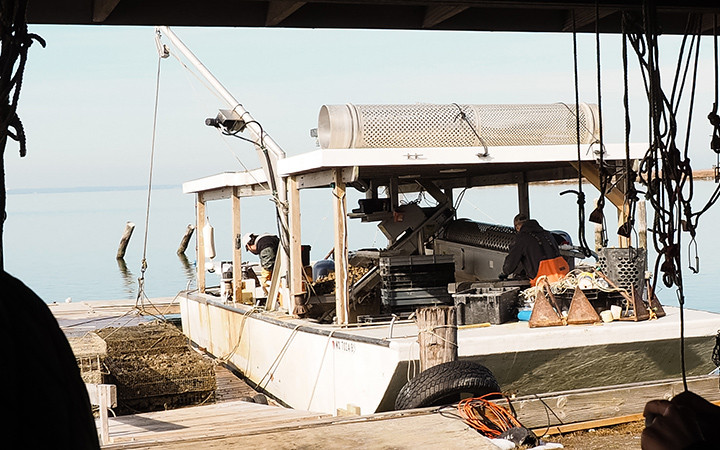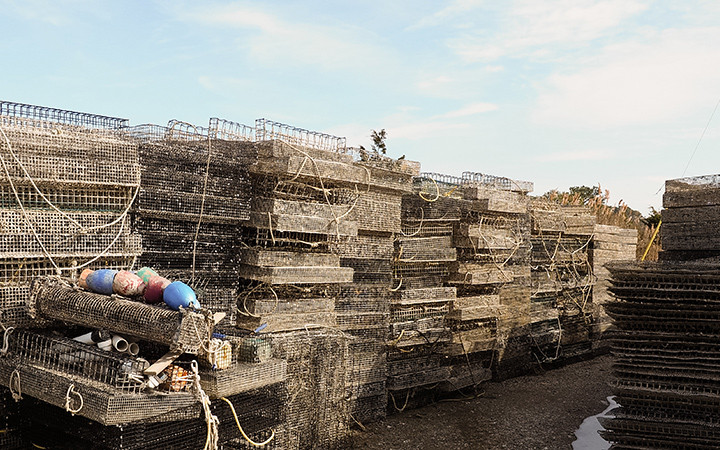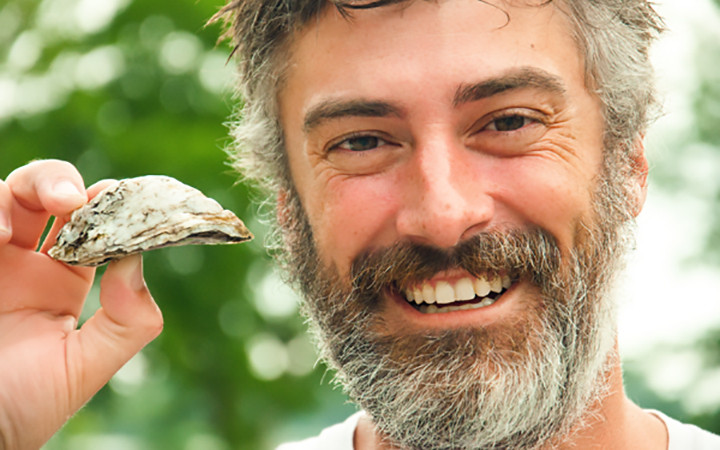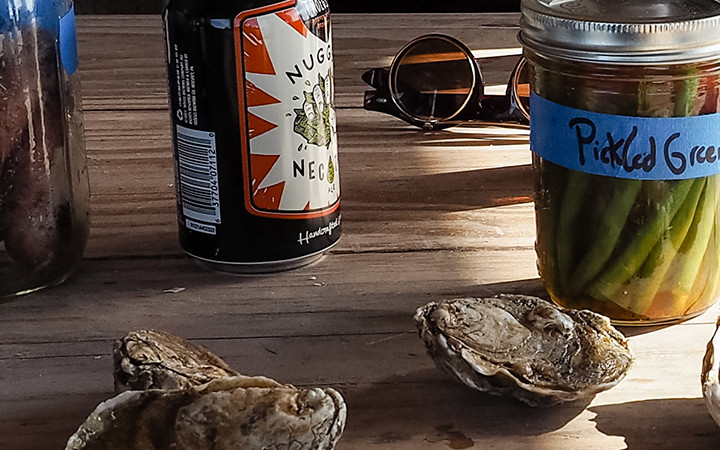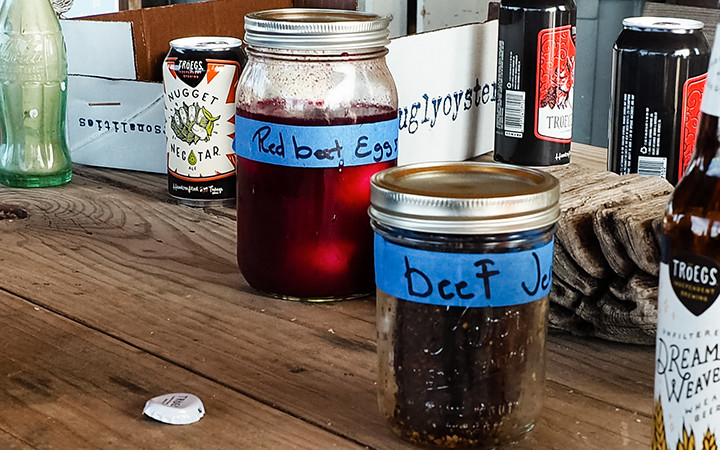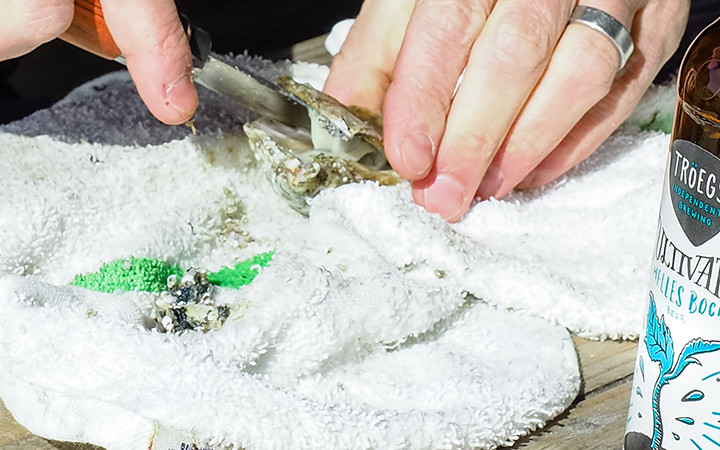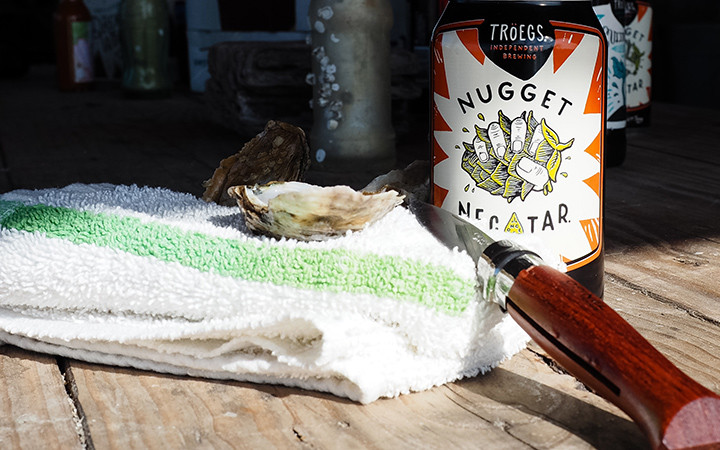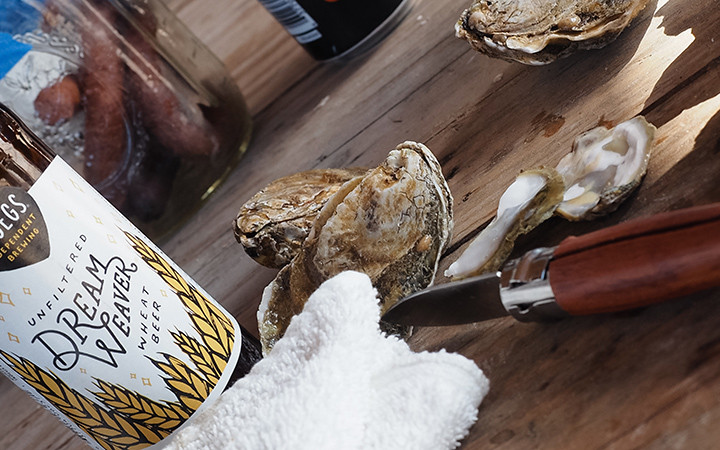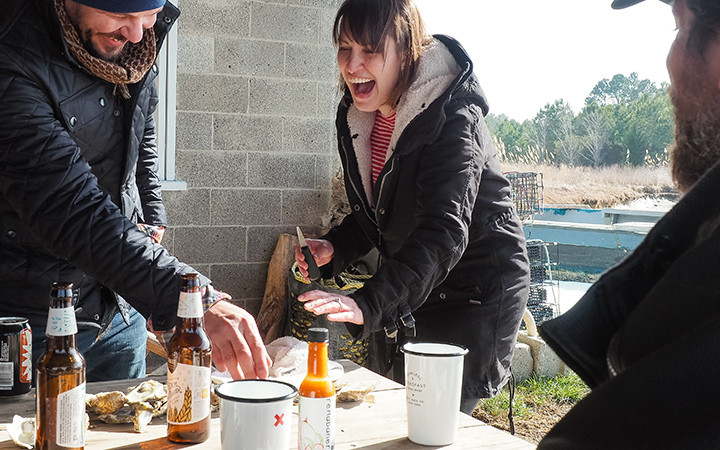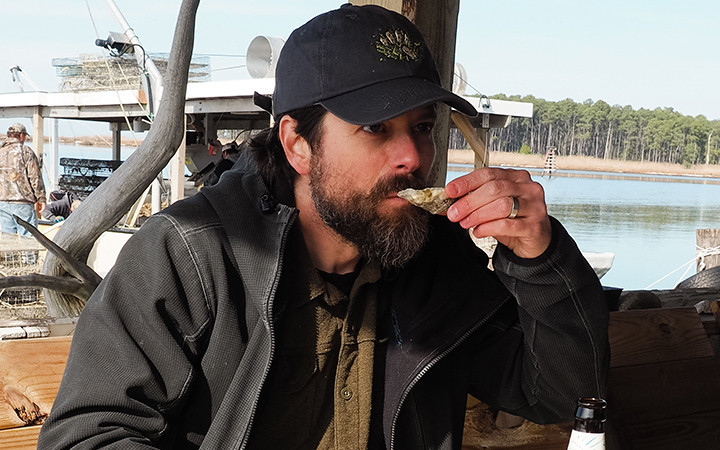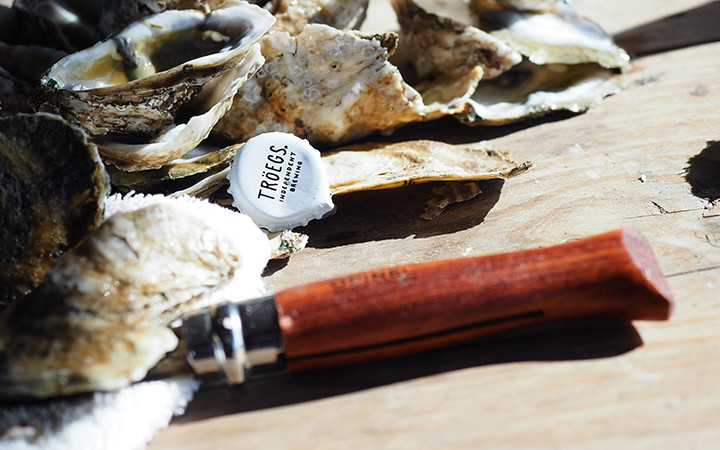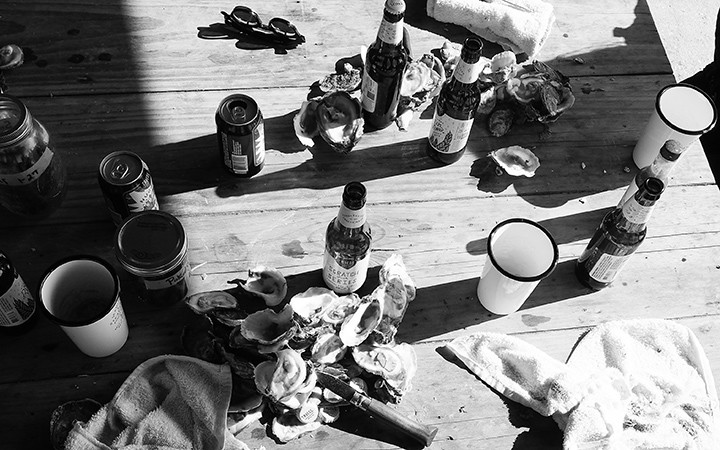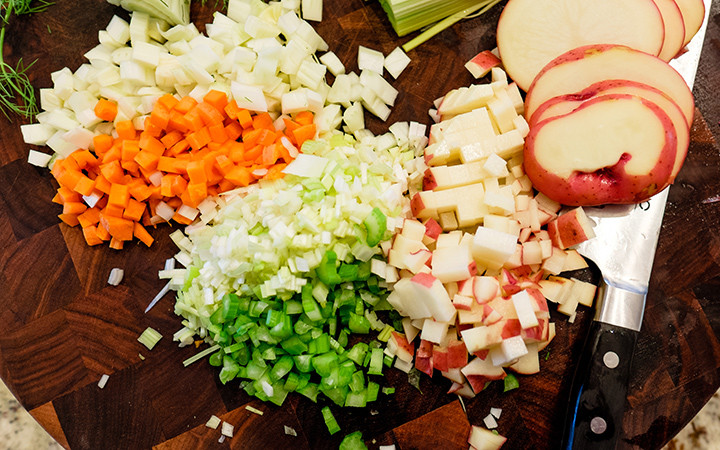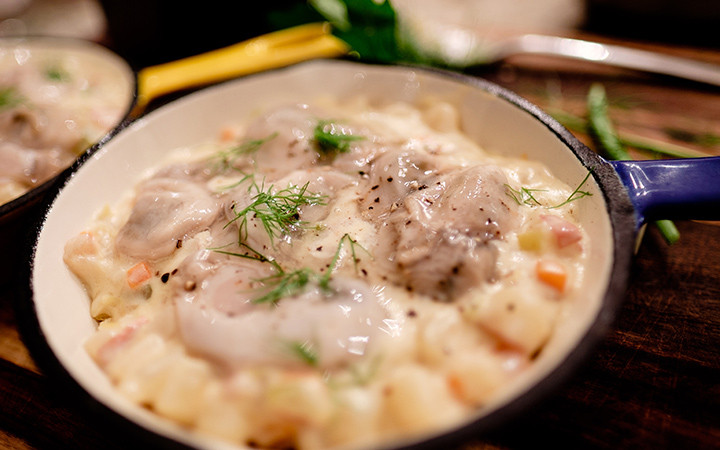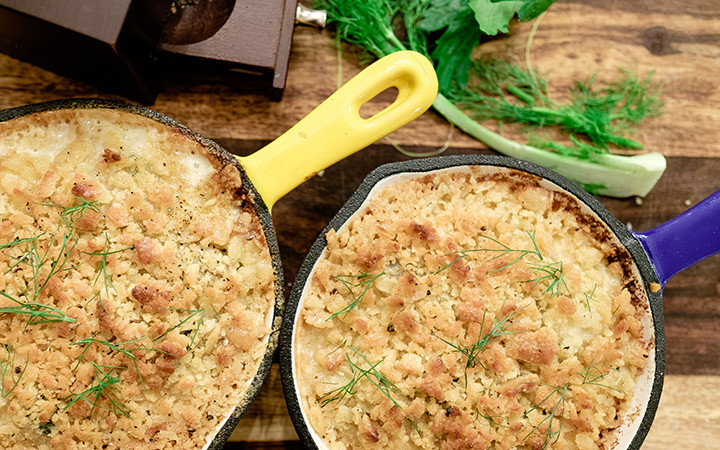Not that it’s been a terribly long winter, but cabin fever was setting in … just feelin’ the itch to get out and do something. Have had oysters on the brain for a while so we set out for Barren Island on the Chesapeake Bay to learn more about oyster farming and to see how our freshly bottled Cultivator Helles Bock would pair – wow, almost said that with a straight face. Who are we kidding? We really wanted to eat oysters, a lot of them.
Getting the trip started off right, Chef Christian whipped up some road snacks: house-made jerky, beef sticks, red beet eggs and pickled green beans. Yup, it was his hat tip to the Baltimore bull oyster roast or, in this case, we dubbed it ‘roadie roast.’ Obviously there’d be oysters, and the beef side of the tradition was taken care of slow-smoked, marinated brisket dried in mouth-watering strips. The sides were ‘family’ inspired complete with Auntie’s sweet beet eggs, and an old buddy’s green bean pickle recipe; “either way you slice it these foods were memory movers, nostalgic inducing time machines that transport you to smiley yester years.” (That’s a direct quote from Christian…he really does talk that way (gotta love it), and he’s also a perfect road trip companion!)
After four hours of driving and snacking, we were greeted by our host, Tim Devine, with a giant smile and a “you’re here. What the f*ck too so long?” It was seriously cold but also sunny as Tim proceeded to nonchalantly march us out onto his piece of paradise by the bay, and we could’ve stayed all day.
A little over 3 years ago, Tim left his job as a professional photographer in New York City to return to the area where he grew up. His former little league coach and a bayside opportunity were calling him and the next thing he knew, he was full on oyster farming. Tim loves that oysters are a sustainable choice and has been testing and learning and chipping and shucking ever since.
The Chesapeake, provides a vast, protected basin of medium salinity water – perfect for oysters. Barren Island’s goal is to bring tasty and sustainably-raised oysters to market while providing relief to wild oyster populations.
We learned oysters are vegetarians. So, raising and feeding Barren Island oysters doesn’t add to overfishing of wild fish and uses less energy and resources than other types of seafood. Tim’s most popular oysters are Buttercups and the Ugly Oyster. He joked that he’s learned that the sexier the name, the more popular, so he decided to give the name Ugly Oyster a try (reminded me of naming beers).
Oysters start out around the size of a few grains of sand, and after approximately 15 months they become a 3 ” East Coast classic. Tim’s oysters are triploids which means that they’re available year-round. His team regularly chips the edges of the oysters, forcing the shell to grow a deeper cup, creating a plumper oyster, meatier, uglier oyster that’s buttery with a sweet finish.
Tim’s a fellow dreamer, we really dug hearing his story and learning about oysters. It was cool to see the small crew hand-sorting oysters and witness the little guys getting thrown back in to grow some more, and all of the cleaning and human touch that goes into getting those delicious oysters in our hands.
Speaking of – we ended the trip with an epic throw down of Uglies, Buttercups, Cultivator, Dreamweaver and even a few Nugget Nectars in the mix. A box of oysters, a broken shucking knife and a few empty bottles later, we were on our way. Tim, thank you for being such a great host! The oysters were so fresh I couldn’t wipe the smile off my face… pretty much the whole drive home. I highly recommend the trip.
Oh, and we are happy to share a little piece of Barren Island with all of you. This week, we’ll feature Barren Island Oysters exclusively on the Snack Bar menu, served on ice with citrus mignonette. AND, Chef is preparing an oyster pie for Sunday brunch. Recipe below as well. Cheers!
A Note from Chef Christian: I can’t exactly say how many oyster pies I’ve made (I know it doesn’t beat out the piles of crab cakes), but there’s something magic about ‘em. Like shucking the little yummy from its shell, the excitement of cracking the pies crust and digging for the gems beneath. Here is how we like to bake the sea rock pies here. Have fun making one at home, I recommend adding family tradition sides from yester year….and a chaser of Cultivator.
Makes 4 Small Pies
Use white brulee style ramekins/cast iron skillets or 8-10 oz casseroles
The Crust:
6 cups Saltine cracker crumbs
8 ounces melted salted butter
1 tablespoon chopped dill
1 teaspoon cracked black pepper
Directions:
Combine above ingredients and set aside
The Stew:
24 shucked oysters, strained (liquid reserved)
1 onion small dice
1 carrot small dice
1 celery rib small dice
½ fennel bulb small dice (reserve tops for garnish)
3 red potatoes small dice
1 leek small dice (just the white part..remember to wash thoroughly)
2 cups heavy cream
2 oz flour
4 oz salted butter
1 lemon, juice and zest
1oz pernod (optional)
Directions:
1. Place a 6 quart sauce pan on medium heat. Add butter, onion, fennel, carrot, celery, leek, and potatoes. Saute till golden and tender. We like our veggies to retain some texture, if you want them soft add a little water to steam them.
2. Add pernod (if using) and cook till dry. Add flour to catch fat then immediately odd oyster juice, lemon juice/zest, and heavy cream. Lower heat to medium low and reduce until liquid coast the back of a spoon.
3. Once mix is thickened remove from heat. Take ramekins and pack bottoms and sides with half the cracker crumbs. Evenly distribute step and top with oysters. Top with remaining bread crumbs and bake at 375f for 15 minutes. Serve with a spoon and Cultivator.
